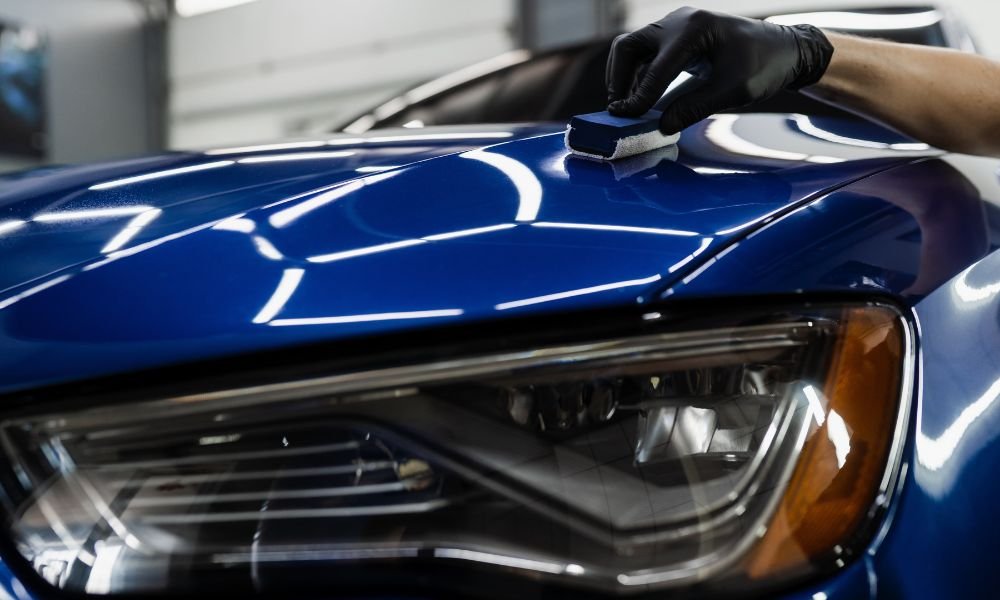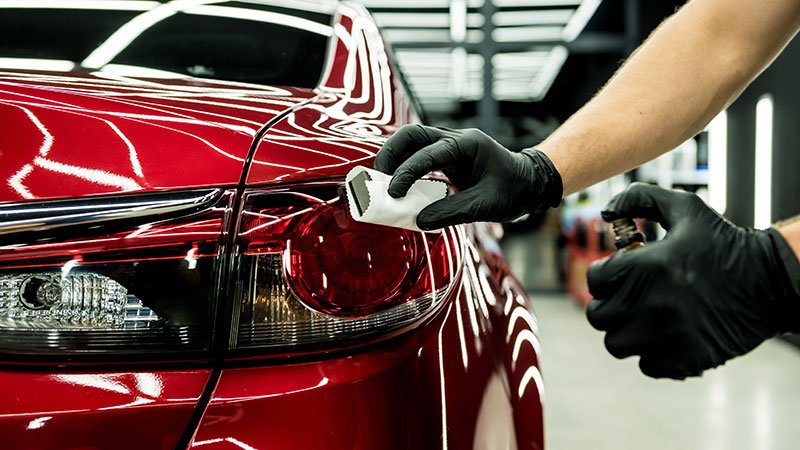Ceramic Coatings San Jose: Boost and Shield Your Lorry's End up
Ceramic Coatings San Jose: Boost and Shield Your Lorry's End up
Blog Article
Revealing the Science Behind Ceramic Coatings: Just How Does It Work and Why Is It Above Standard Options?
Ceramic finishes have been acquiring popularity in various sectors for their remarkable performance and resilience. Understanding how ceramic coverings work and why they surpass conventional choices is important for those seeking to improve the longevity and strength of their materials.
The Chemistry of Ceramic Coatings
In recognizing ceramic finishings, diving into the elaborate chemistry behind their make-up is crucial for comprehending their capability and toughness. Ceramic coatings are largely made up of silicon dioxide (SiO2), which creates a safety and strong layer when used to various surfaces. This chemical structure gives phenomenal resistance to heat, chemicals, and rust, making ceramic finishes highly searched for for a variety of applications.
The chemistry behind ceramic finishings includes the development of covalent bonds between silicon and oxygen atoms, producing a rigid network that improves the finishing's durability and longevity. Additionally, the visibility of other aspects such as light weight aluminum, zirconium, and titanium more improves the coating's homes, using enhanced hardness and bond to surface areas.
Comprehending the chemical make-up of ceramic finishings allows for the modification of formulations to match certain demands, whether it be for automobile, commercial, or residential functions. By harnessing the power of chemistry, ceramic finishes remain to pave the means for remarkable protection and performance in different sectors.
Benefits of Ceramic Coatings

An additional considerable benefit of ceramic coverings is their hydrophobic nature. This residential or commercial property creates water to bead up and roll off the layered surface area, bring dirt and impurities with it. Because of this, ceramic coatings make cleaning and keeping surfaces a lot easier and less lengthy. Ceramic coverings use improved tint and gloss depth, providing surface areas a vibrant and glossy look. Generally, the plethora of advantages supplied by ceramic coatings make them a premium choice compared to traditional layer approaches.
Just How Ceramic Coatings Bond
Ceramic finishes bond to surface areas through a procedure that entails molecular bond and chemical interactions. When a ceramic finish is put on a surface area, it creates a strong bond by chemically sticking to the surface area at a molecular level. This bond is created through the formation of covalent bonds, which are durable and incredibly solid. The ceramic coating's molecules permeate the pores of the surface, creating a limited hold that resists splitting up.
Additionally, the chemical interactions between the ceramic finishing and the surface area better enhance the bond. ceramic coatings san jose. These communications allow the ceramic layer to develop a constant and seamless layer on the surface, offering exceptional defense and durability. Unlike standard layers that may rest on the surface area without totally original site bonding, ceramic coatings create a permanent bond that is resistant to chemicals, UV rays, and rough environmental conditions

Essentially, the bonding mechanism of ceramic coverings ensures a durable and reliable safety layer that outshines standard layer choices. This exceptional bond contributes to the longevity, scrape resistance, and long life of ceramic coatings, making them a recommended choice for various applications.
Resilience of Ceramic Coatings
The exceptional durability of ceramic finishes originates from their durable molecular attachment and chemical communications with surfaces, ensuring a resilient protective layer that surpasses standard coating options. Once applied, ceramic finishes create a strong bond with the substrate, creating a resistant obstacle versus different ecological stress factors such as UV radiation, chemicals, and abrasions. This bond is so safe and secure that it can stand up to the roughness of daily use without wearing away or weakening quickly.
Unlike conventional finishes that may deteriorate in time, ceramic layers preserve their stability for an extensive duration, giving long-lasting protection for the underlying surface area. The solid molecular framework of ceramic finishings resists chipping, fading, and peeling, making certain that the surface area stays protected and aesthetically pleasing for years ahead. This durability not just reduces the requirement for frequent reapplications but also saves money and time over time. On the whole, the extraordinary resilience of ceramic coatings makes them an exceptional selection for safeguarding a variety of surfaces in different applications.
Ceramic Coatings Vs. Conventional Alternatives
In contrast to traditional finishing techniques, ceramic coatings use a distinctive mix of durability and safety abilities that establish them apart in different surface defense applications. Typical choices have a peek at these guys such as wax or sealants supply a short-term layer of defense that can wear away rapidly, requiring frequent reapplication. On the various other hand, ceramic finishes form a solid bond with the surface area, creating a semi-permanent or long-term barrier that is very immune to abrasion, chemicals, UV rays, and severe temperature levels.
Furthermore, ceramic coatings use exceptional hydrophobic residential or commercial properties contrasted to conventional finishings. The hydrophobic nature of ceramic coverings causes water to bead up and roll off the surface, carrying dirt and pollutants with it. This self-cleaning effect aids to preserve the surface's cleanliness and gloss for prolonged durations, lowering the need for regular upkeep.
Additionally, ceramic finishings have a thicker layer contrasted to conventional options, supplying improved scratch resistance and security versus small impacts. This toughness ensures long-lasting performance and assists preserve the aesthetic allure of the treated surface area for an extensive duration.
Final Thought
To conclude, the scientific research behind ceramic coverings exists in their chemical make-up and bonding residential or commercial properties, making them above conventional alternatives. The benefits of ceramic finishes consist of increased sturdiness and security for surfaces. By comprehending here are the findings exactly how ceramic finishings work and their benefits over traditional choices, one can make enlightened decisions when taking into consideration layer alternatives for various applications.
Unlike typical finishes that might sit on the surface without completely bonding, ceramic coverings create an irreversible bond that is resistant to chemicals, UV rays, and harsh environmental problems.
The phenomenal longevity of ceramic finishings stems from their durable molecular adhesion and chemical communications with surfaces, making certain a durable safety layer that surpasses traditional layer alternatives.Unlike standard finishings that may deteriorate over time, ceramic coverings maintain their integrity for a prolonged period, supplying long-lasting defense for the underlying surface area.In comparison to traditional layer techniques, ceramic coverings supply an unique mix of toughness and safety abilities that establish them apart in various surface area security applications. By recognizing just how ceramic layers work and their benefits over traditional options, one can make informed choices when considering coating alternatives for different applications.
Report this page